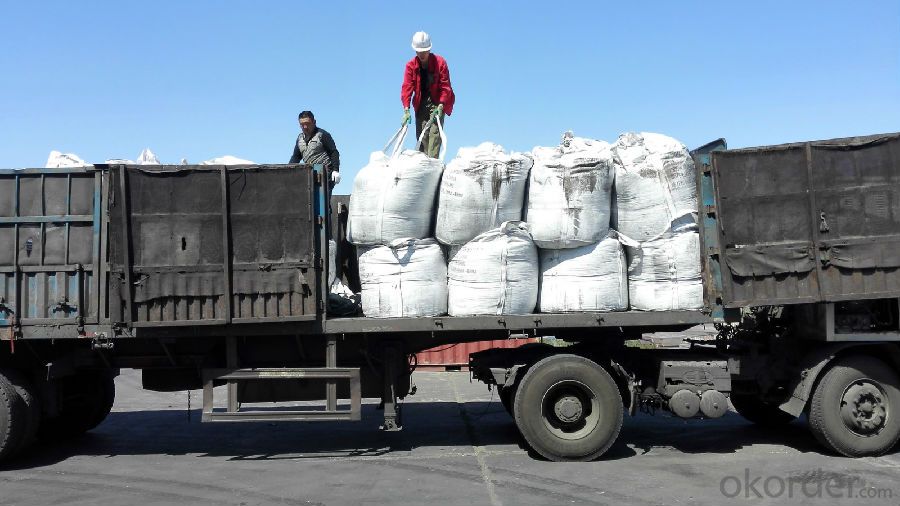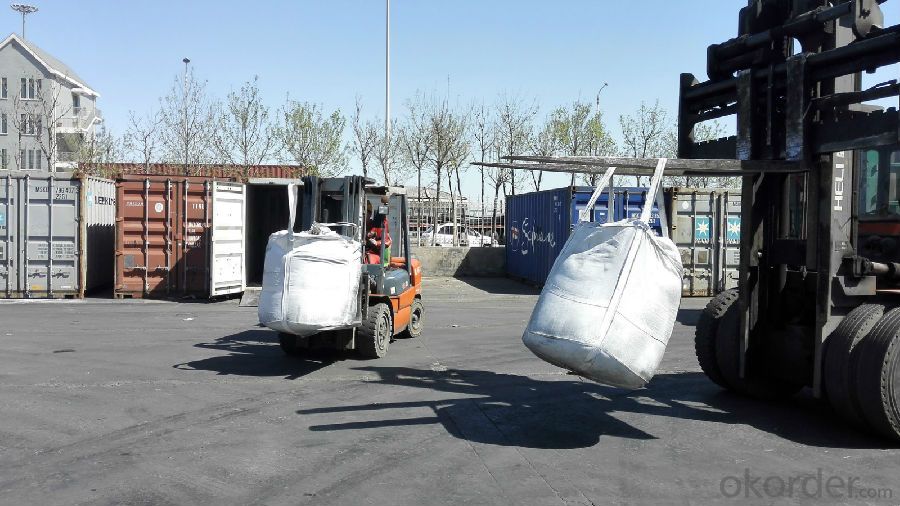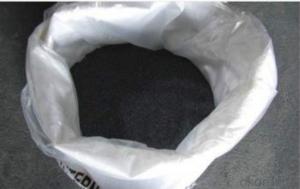Injection caron used in steel industry made in China
- Loading Port:
- Shekou
- Payment Terms:
- TT OR LC
- Min Order Qty:
- 21.9
- Supply Capability:
- 1019 m.t./month
OKorder Service Pledge
OKorder Financial Service
You Might Also Like
Introduction:
Calcined anthracite can be called carbon additive, carbon raiser, recarburizer, injection coke, charging coke, gas calcined anthracite.It is playing more and more important role in the industry
Best quality Anthracite as raw materials through high temperature calcined at over 2000℃ by the DC electric calciner with results in eliminating the moisture and volatile matter from Anthracite efficiently, improving the density and the electric conductivity and strengthening the mechanical strength and anti-oxidation. It has good characteristics with low ash, low resistivity, low sulphur, high carbon and high density. It is the best material for high quality carbon products. It is used as carbon additive in steel industry or fuel.
Features:
G-High Calcined Anthracite is produced when Anthracite is calcined under the temperature of 1240°C in vertical shaft furnaces. G-High Calcined Anthracite is mainly used in electric steel ovens, water filtering, rust removal in shipbuilding and production of carbon material.
Specifications:
F.C.% | 95MIN | 94MIN | 93MIN | 92MIN | 90MIN | 85MIN | 84MIN |
ASH % | 4MAX | 5MAX | 6 MAX | 6.5MAX | 8.5MAX | 12MAX | 13MAX |
V.M.% | 1 MAX | 1MAX | 1.0MAX | 1.5MAX | 1.5MAX | 3 MAX | 3 MAX |
SULFUR % | 0.3MAX | 0.3MAX | 0.3MAX | 0.35MAX | 0.35MAX | 0.5MAX | 0.5MAX |
MOISTURE % | 0.5MAX | 0.5MAX | 0.5MAX | 0.5MAX | 0.5MAX | 1MAX | 1MAX |
Pictures




FAQ:
Packing:
(1). Waterproof jumbo bags: 800kgs~1100kgs/ bag according to different grain sizes;
(2). Waterproof PP woven bags / Paper bags: 5kg / 7.5kg / 12.5kg / 20kg / 25kg / 30kg / 50kg small bags;
(3). Small bags into jumbo bags: waterproof PP woven bags / paper bags in 800kg ~1100kg jumbo bags.
Payment terms
20% down payment and 80% against copy of B/L.
Workable LC at sight.. Thanks for your kind support and best regards
- Q:How does carbon contribute to the structure of DNA?
- Carbon is an essential element in the structure of DNA as it forms the backbone of the molecule. Carbon atoms in the sugar-phosphate backbone of DNA provide stability and flexibility, allowing the molecule to twist and fold into its double helix shape. Additionally, carbon atoms are also present in the nitrogenous bases, which are the building blocks of the genetic code. Overall, carbon's presence in DNA is crucial for its overall structure and function in storing and transmitting genetic information.
- Q:How does carbon affect air quality?
- Carbon is a major contributor to air pollution as it combines with oxygen to form carbon dioxide (CO2), a greenhouse gas responsible for climate change. Additionally, carbon-based pollutants, such as carbon monoxide (CO) and volatile organic compounds (VOCs), can be released from the combustion of fossil fuels and contribute to poor air quality and negative health effects.
- Q:What are the impacts of carbon emissions on the spread of infectious diseases?
- The impacts of carbon emissions on the spread of infectious diseases are significant. Carbon emissions contribute to climate change, which in turn affects various factors that influence the spread of diseases. Rising temperatures, changes in precipitation patterns, and altered ecosystems all play a role in creating favorable conditions for the proliferation and transmission of infectious diseases. These changes can lead to the expansion of disease vectors like mosquitoes, ticks, and rodents, and increase the geographical range of diseases such as malaria, dengue fever, and Lyme disease. Additionally, carbon emissions can weaken human immune systems and exacerbate respiratory illnesses, making individuals more susceptible to infections. Overall, reducing carbon emissions is crucial to mitigate the impacts of climate change and curb the spread of infectious diseases.
- Q:What are the impacts of carbon emissions on human health in developing countries?
- Carbon emissions have significant impacts on human health in developing countries. These emissions, primarily from the burning of fossil fuels and deforestation, contribute to the worsening of air quality, leading to a range of health problems. One of the most immediate and visible impacts is respiratory diseases. High levels of carbon emissions result in the release of harmful pollutants such as particulate matter and nitrogen dioxide. These pollutants can irritate the respiratory system and exacerbate existing conditions like asthma and bronchitis. In developing countries where access to healthcare may be limited, these respiratory diseases can be particularly detrimental, leading to increased mortality rates. Furthermore, carbon emissions contribute to climate change, which has indirect effects on human health. Rising temperatures and changing weather patterns can lead to the spread of vector-borne diseases like malaria and dengue fever. Developing countries often lack the necessary infrastructure and resources to effectively combat these diseases, resulting in increased rates of infection and mortality. Moreover, carbon emissions contribute to the formation of ground-level ozone, a harmful air pollutant. Exposure to high levels of ozone can cause respiratory problems, cardiovascular issues, and even premature death. Developing countries, with their limited access to healthcare and vulnerability to extreme weather events, may experience higher rates of illness and mortality due to ozone exposure. Additionally, carbon emissions contribute to the acidification of oceans, which harms marine ecosystems. This, in turn, affects the availability and quality of seafood, a vital source of nutrition for many developing countries. Impaired access to nutritious food can lead to malnutrition and various health issues, especially among vulnerable populations such as children and pregnant women. In conclusion, carbon emissions have severe impacts on human health in developing countries. The release of pollutants from burning fossil fuels and deforestation leads to respiratory diseases, the spread of vector-borne illnesses, ozone-related health problems, and nutritional deficiencies. These health impacts highlight the need for developing countries to prioritize sustainable development and transition to clean energy sources, while also emphasizing the importance of international cooperation to address this global issue.
- Q:What are carbon credits and how do they work?
- Carbon credits are a market-based approach to reducing greenhouse gas emissions. They work by assigning a value to the reduction or removal of one metric ton of carbon dioxide or its equivalent (CO2e) from the atmosphere. These credits represent the right to emit a specific amount of greenhouse gases and can be traded or sold on the carbon market. The concept behind carbon credits is to provide an incentive for companies, organizations, or individuals to reduce their emissions. By setting a price for carbon emissions, it encourages businesses to invest in cleaner technologies and practices to offset their carbon footprint. This leads to a reduction in overall greenhouse gas emissions, contributing to the global effort to combat climate change. To obtain carbon credits, organizations undertake projects that reduce or remove greenhouse gas emissions. These projects can include renewable energy installations, energy efficiency improvements, afforestation (planting trees), or investing in clean development mechanisms in developing countries. Each project is assessed and verified by an independent third party to ensure its legitimacy and the actual reduction in emissions. Once a project is approved and verified, it is assigned a specific number of carbon credits based on the amount of emissions it has reduced or removed. These credits can then be sold on the carbon market to companies or individuals looking to offset their own emissions. The buyers can use these credits to compensate for their own emissions, effectively canceling out their carbon footprint. The carbon market provides a mechanism for the buying and selling of carbon credits, allowing for a flexible and efficient way to address climate change. The price of carbon credits can vary depending on supply and demand dynamics, as well as the stringency of emission reduction targets set by governments or global agreements. Overall, carbon credits play a vital role in incentivizing emission reduction activities and promoting sustainable practices. They provide a financial mechanism for businesses to invest in cleaner technologies while contributing to the global effort to mitigate climate change.
- Q:What kinds of carbon black paper do you have?
- Classification of weights:Carbon free carbon paper has 45g/m2CB paper, 47g/m2CF paper and 52g/m2CFB paper according to quantitative. Carbon free carbon paper is divided into 80 parts: 48, 50 and 80: 52: below: 47 and 2.55-60 grams for office reports, receipts, delivery orders, delivery lists, etc..Two. Classification of specifications:Carbon free carbon paper can be divided into web (rools) and paperboard (sheets) according to specifications. The width of the web can range from 160mm to 1940mm, and the size of the flat paper can range from 420mm*530mm to 1420mm*1420mm.
- Q:How does carbon impact the prevalence of tsunamis?
- Carbon does not directly impact the prevalence of tsunamis. Tsunamis are primarily caused by seismic activity, such as earthquakes or volcanic eruptions, which are unrelated to carbon emissions. However, rising carbon levels can contribute to global climate change, leading to the melting of polar ice caps and potentially increasing the risk of coastal flooding, which can indirectly amplify the impact of a tsunami.
- Q:What is the difference in carbon content of low carbon steel, medium carbon steel and high carbon steel?
- The carbon content of medium carbon steel (AISI1029 to 1053) is 0.25% to 0.55%, manganese content is 0.30% to 1%, phosphorus content is not more than 0.04%, sulfur content is not more than 0.05%.
- Q:Glucose contains resveratrol (C14H12O3) to determine the mass ratio of resveratrol and carbon dioxide of the same quality as carbon dioxide
- They are x and y, containing carbon equal, according to the mass of an element = the mass of a compound * the elementMass fractionFor C14H12O3, the carbon mass fraction is C%=12*14/ (12*14+12+16*3) *100%=73.68%For CO2, the mass fraction of carbon is 12/ (12+16*2) =27.27%There is x *73.68%=y*27.27%So there's X: y =57:154
- Q:What are the different types of carbon-based pigments?
- There are several different types of carbon-based pigments that are widely used in various industries. Some of the most common types include carbon black, graphite, charcoal, and lampblack. Carbon black is a highly pure form of carbon that is produced by the incomplete combustion of hydrocarbon fuels. It is the most widely used carbon-based pigment and is known for its intense black color. Carbon black is used in a wide range of applications, including inks, paints, plastics, and rubber products. Graphite is another important carbon-based pigment that is known for its dark gray to black color. It is a soft and brittle material that can be easily crushed into a fine powder. Graphite is used primarily in pencils, as it leaves a smooth and consistent mark on paper. It is also used in other applications such as lubricants, batteries, and electrical conductors. Charcoal is a carbon-based pigment that is produced by burning wood or other organic materials in the absence of oxygen. It is known for its deep black color and is commonly used in art as a drawing medium. Charcoal can be easily manipulated and smudged on paper, allowing artists to create a wide range of tones and textures. Lampblack, also known as carbon black or soot, is a pigment that is produced by burning organic materials such as oil or wood. It has a deep black color and is often used in printing inks, coatings, and dyes. Lampblack is also used in various industrial applications, including as a coloring agent in plastics and rubber products. These are just a few examples of the different types of carbon-based pigments that are commonly used. Each type has its own unique properties and applications, making them versatile and essential in various industries.
1. Manufacturer Overview |
|
|---|---|
| Location | |
| Year Established | |
| Annual Output Value | |
| Main Markets | |
| Company Certifications | |
2. Manufacturer Certificates |
|
|---|---|
| a) Certification Name | |
| Range | |
| Reference | |
| Validity Period | |
3. Manufacturer Capability |
|
|---|---|
| a)Trade Capacity | |
| Nearest Port | |
| Export Percentage | |
| No.of Employees in Trade Department | |
| Language Spoken: | |
| b)Factory Information | |
| Factory Size: | |
| No. of Production Lines | |
| Contract Manufacturing | |
| Product Price Range | |
Send your message to us
Injection caron used in steel industry made in China
- Loading Port:
- Shekou
- Payment Terms:
- TT OR LC
- Min Order Qty:
- 21.9
- Supply Capability:
- 1019 m.t./month
OKorder Service Pledge
OKorder Financial Service
Similar products
New products
Hot products





























